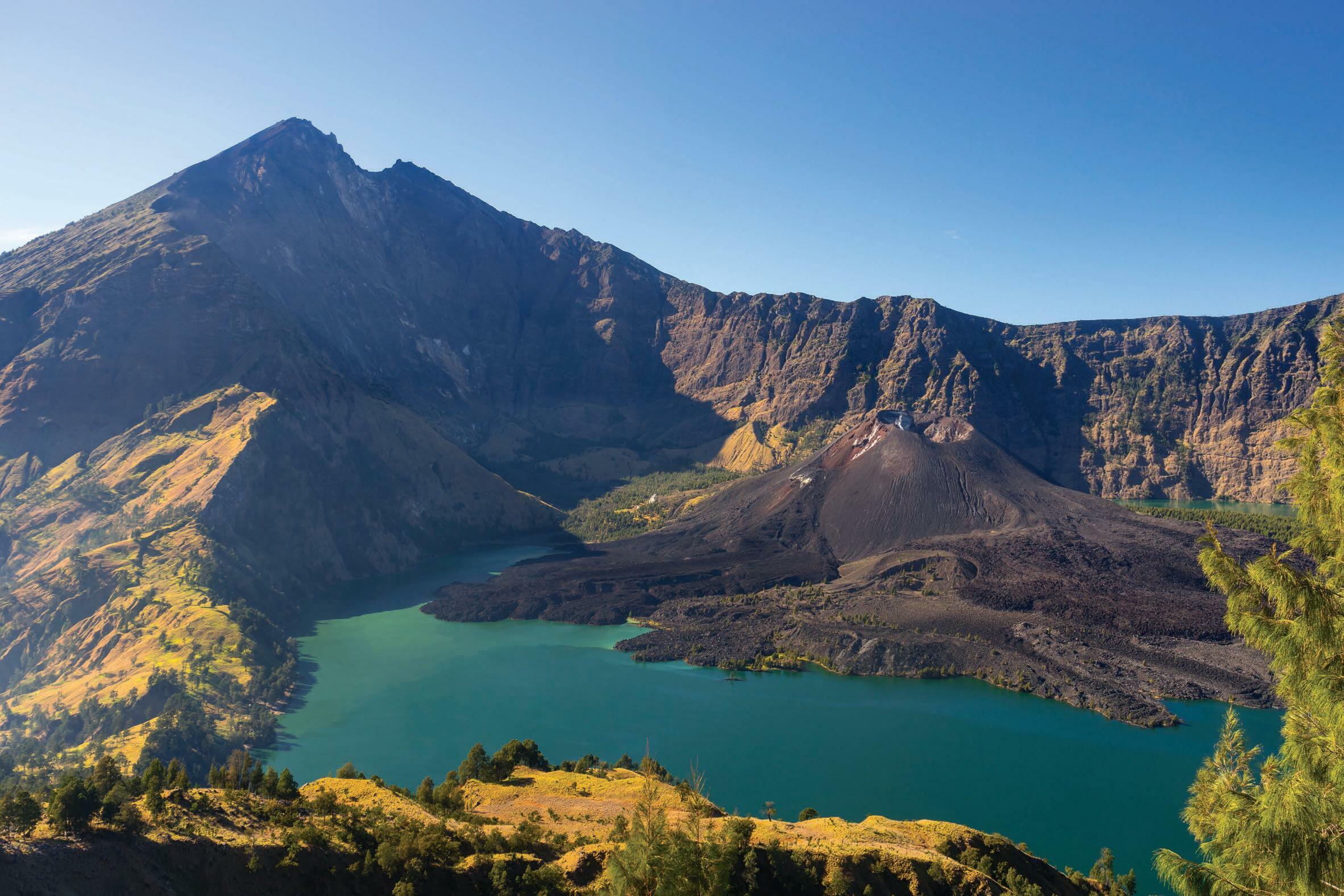
Fiery volcanoes and the frigid polar regions seem poles apart. But concealed in the Arctic and Antarctic ice sheets are mementos-ash and sulfate particles-from past super-powerful volcanic eruptions. During such eruptions, volcanoes spew material dozens of miles into the sky. The swirling of winds disperses these chemicals and ash over continents, all the way to the poles. When snow falls there, the material is also deposited. In ice cores-cylinders of ice drilled from ice sheets-sulfate from past volcanic plumes shows up as spikes. Measuring how intense each spike is helps scientists figure out how strong each eruption was.
In the 1970s, polar scientists stumbled upon a sulfate spike that occurred in roughly 1259. Unlike others, though, this one was ginormous. It dwarfed the spike from the ear-splitting 1883 eruption of Mount Krakatoa in Indonesia. "The eruption was one of the largest of the last millennium," says Céline Vidal. She's a volcanologist-a scientist who studies volcanoes. She also lectures about geography at the University of Cambridge in England. "The amount of material erupted would have buried New York City under about eight feet (2.5 m) of rocks and ash."
Medieval European accounts also provided indirect evidence for an enormous eruption at around the same time. Severe hailstorms and floods plagued eastern England and parts of Europe in the winter of 1260 to 1261. From Iceland to Italy, ice layers crusted over seas and rivers.
There was just one problem: Nobody seemed to have reported seeing a volcano erupting. So, where was the missing volcano?
HOT INSIDE, COLD OUTSIDE
Volcanic ash in the upper layers of the atmosphere can block sunlight and heat. This makes summers colder than usual. Trees show stunted growth. Harvests of crops may also be poorer.
Denne historien er fra October 2023-utgaven av Muse Science Magazine for Kids.
Start din 7-dagers gratis prøveperiode på Magzter GOLD for å få tilgang til tusenvis av utvalgte premiumhistorier og 9000+ magasiner og aviser.
Allerede abonnent ? Logg på
Denne historien er fra October 2023-utgaven av Muse Science Magazine for Kids.
Start din 7-dagers gratis prøveperiode på Magzter GOLD for å få tilgang til tusenvis av utvalgte premiumhistorier og 9000+ magasiner og aviser.
Allerede abonnent? Logg på

SO MESSY, IT'S CLEAN
Make your very own soap!

Making Medicine
FROM DISCOVERY ΤΟ DOCTORS

A WHIFF OF THE FUTURE
TEACHING AI TO SMELL FOR HEALTH, SAFETY— AND SHOPPING

CAROLYN BERTOZZI
CHEMIST AND MEDICAL RESEARCHER

The Air Around Us
WHAT'S IN AIR-AND WHY IT MATTERS

CREEPING, CRAWLING COLORS
Test the rainbow with two sweet experiments.

The magical Transformation of BREAD
HOW BAKERS TURN FLOUR INTO FRESH LOAVES

UMA PARASAR
FOOD CHEMIST

DISCARD DEVICE, EXPECT EXPLOSION. WAIT, WHAT?
Your phone shuts down randomly. You have to charge it constantly. And you can barely see the screen through a spiderweb of cracks. Time for a new cell phone. But what should you do with the old one? The number one rule: Never throw it in a trash can or recycle bin. It might start a fire or even blow up.

PIZZA FOR TWO (OR MORE)
It's time for a snack, and you and your pal are all set to share a pizza, with each of you getting half. When the pizza arrives, however, you find that the slices are not all the same size.